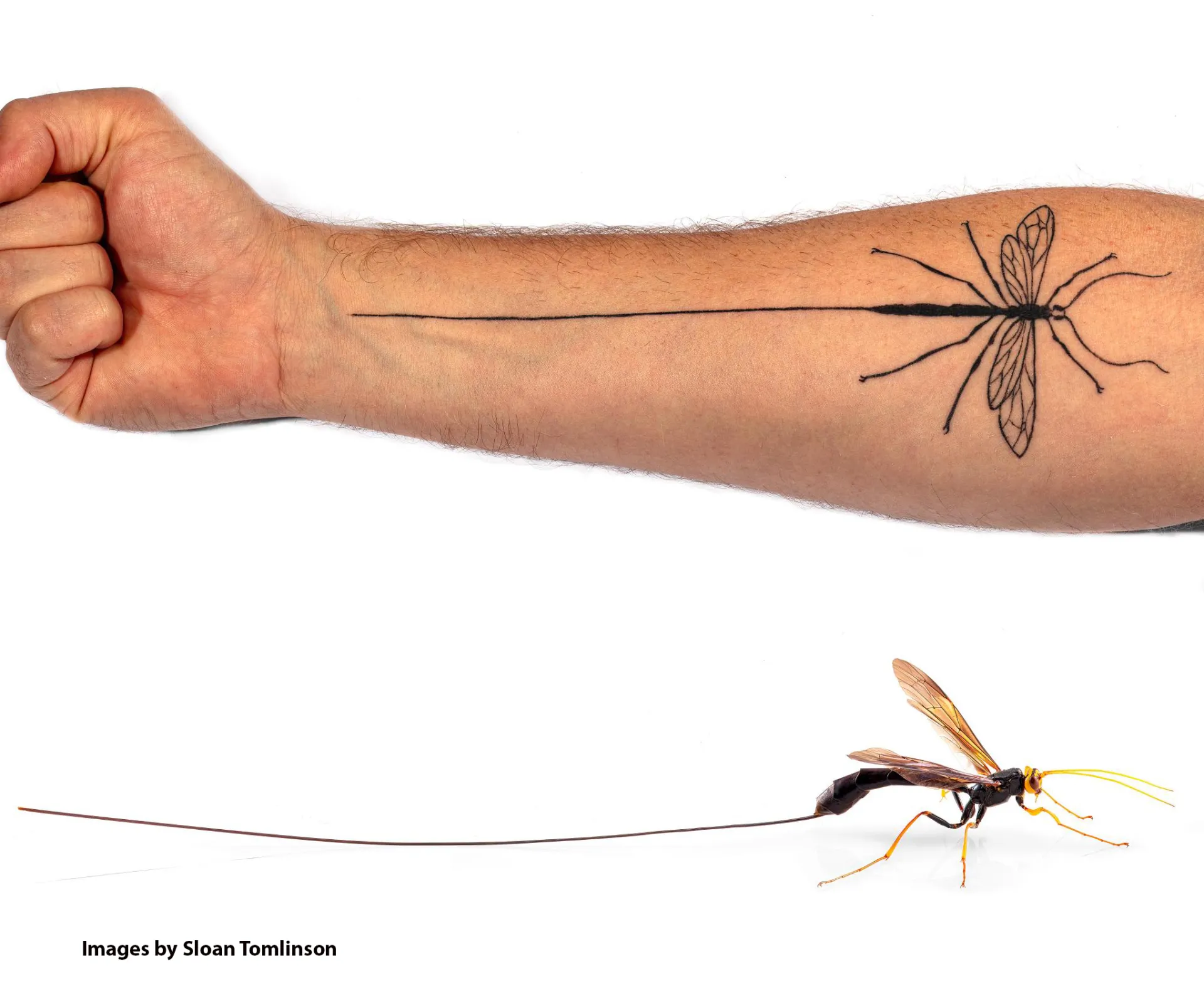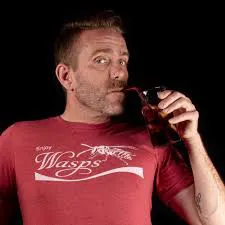
This is too good not to share!
"That Wasp Guy" Sloan Tomlinson of Hatfield, Mass., an artist, photographer, researcher, and educator who "shares the beauty of the most-maligned insects: wasps," now has an incredible tattoo on his arm.
It's of a Megarhyssa atrata, also known as the black giant ichneumonid wasp, a species of large ichneumon wasps.

Tomlinson, a Facebook friend, shared this on FB: "It’s been over ten years since my last tattoo, and none of my previous tattoos are wasp-related (crazy right?). Well, no longer! Finally have a wasp tattoo in the form of one of my favourite wasps, Megarhyssa atrata, an ichneumon native to my area with the longest ovipositor of any insect on earth! These amazing wasps lay their eggs on horntail larvae deep inside dead and dying wood and they need these ridiculously long ovipositors to reach them! Also this is my first tattoo done by a friend, the amazingly talented Eric Talbot from Iron Lantern Tattoo, Inc. in Easthampton, MA! Thanks so much, Eric for the brilliant execution of this phenomenal insect! (Maybe more wasp tattoos are in my future!) "
See Tomlinson's work, a veritable celebration of wasps, on his Instagram account at https://www.instagram.com/thatwaspguy/
"Wasp Woman" UC Davis Distinguished Professor Emerita Lynn Kimsey of the Department of Entomology and Nematology also thinks the tattoo is incredible.
"That's so awesome!" said Kimsey, a past president of the International Society of Hymenopterists and who directed the Bohart Museum of Entomology at UC Davis for 34 years before her retirement in 2024. "We do have some of these wasps in the collection. They're pretty impressive size-wise but also how they insert their ovipositors. They don't use preexisting tunnels, instead they secrete cellulase from the ovipositor and literally melt their way through the wood!"
Although retired from teaching, Kimsey continues her research and public service as well as writing and editing the Bohart Museum newsletter, and the museum's Fact Sheets, which include horntail wasps.
And just how long is the ovipositer? Curious minds want to know. Bugguide.net says the ovipositer is 130mm in length and the body, 38mm. So, almost 7 inches in total length.
This parasitic species, native to northeastern and central United States as well as southeastern Canada, is found on declining or recently dead hardwood trees. The female has a distinctive dark black body and yellow head.
"Pigeon horntail larvae develop inside decaying hardwoods during the winter, and Megarhyssa atrata seeks out these locations to oviposit," according to the Animal Diversity website. "The Megarhyssa atrata cycle begins when the females oviposit their eggs in either decayed logs, fallen trees, or stumps where the larvae of pigeon horntails have burrowed into the wood. Burrows chosen as egg-laying locations have often been invaded by fungus and rot, making it easier to insert the ovipositor."
Fascinating? Yes.
Open House at the Bohart Museum on Oct. 5
And note that the Bohart Museum's first open house of the 2025-26 academic year is Sunday, Oct. 5, from 1 to 4 p.m. The theme: "Museum ABC's: How to Collect and Curate." The open houses are free and family friendly. (See schedule on Bug Squad blog)
The Bohart Museum, founded in 1946, houses a global collection of eight million insect specimens, plus a live petting zoo, including Madagascar hissing cockroaches, walking sticks and tarantulas; and an insect-themed gift shop, stocked with T-shirts, hoodies, books, posters, jewelry, stuffed animals and more.
Director of the Bohart, succeeding Kimsey, is professor Jason Bond, the Evett and Marion Schindler Endowed Chair of Insect Systematics, UC Davis Department of Entomology and Nematology, and executive associate dean of the College of Agricultural and Environmental Sciences. For more information on the Bohart Museum, email bmuseum@ucdavis.edu.
(Cover image: Megarhyssa atrata, also known as the black giant ichneumonid wasp. (Photo by Sloan Tomlinson)

